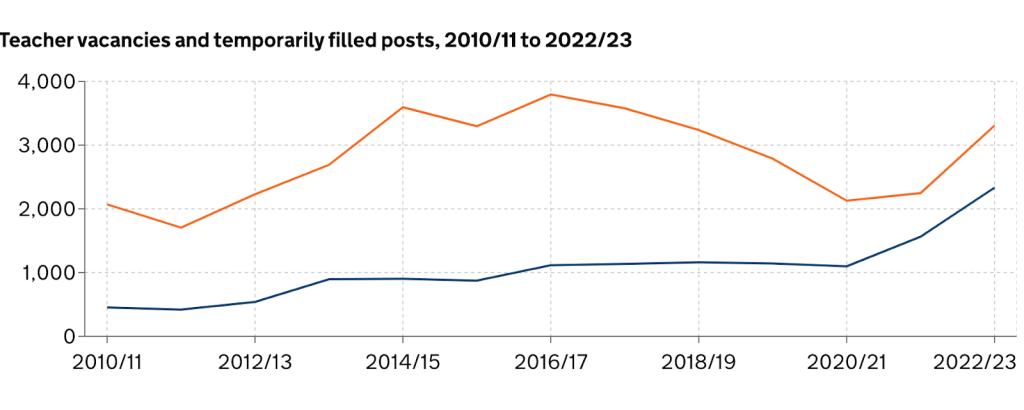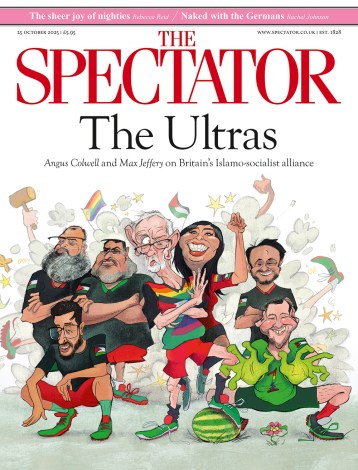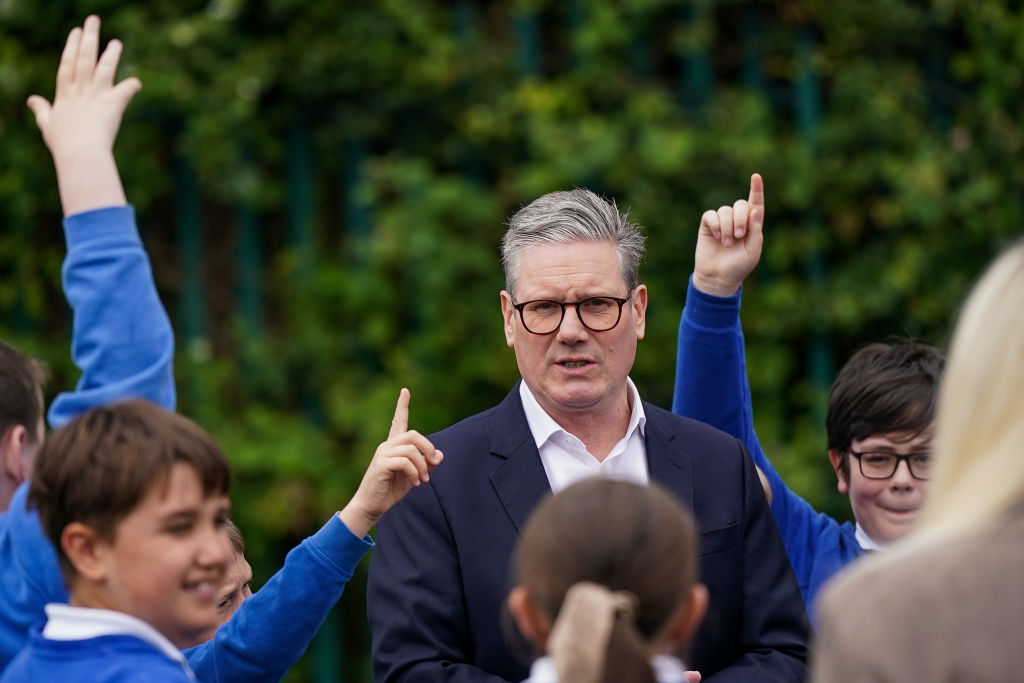Perhaps Keir Starmer’s only solid election pledge is to use the money from VAT on private school fees to ‘hire 6,500 more teachers’ over five years. But how solid is this pledge? And what’s the context?
There are 530,000 teachers, so if the 6,500 were to be hired tomorrow, it would increase the headcount by just 1.3 per cent. Hardly transformational. But the increase is to be spread over five years – which technically can be honoured by 1,300 a year, upping the headcount by just 0.3 per cent a year. This is so small as to be a rounding error. It’s a third of a teacher per school. But Labour isn’t even promising ‘more’ than 530,000 (ie, it’s not promising to take the number to 536,500 in five years). Starmer means more than there would otherwise be.
He can’t mean ‘more than planned’ because there is no five-year target for hiring teachers: there’s nothing beyond a teacher training target for the next year. The odds are that the headcount will fall – and that Starmer will oversee a great education recession, driven by demographics.
The low UK birth rate means the primary school population peaked at 4.6 million pupils five years ago with the secondary population peaking at 3.2 million pupils this year. The Department for Education publishes projections, to assess how many (or few) teachers we’ll need in future. Here is their latest assessment:
Now, let’s look at another factor backdrop: the high churn in teaching. Every year, about 40,000 teachers - that’s about 7 per cent of the total - leave the profession either quitting or retiring. The below shows the exodus: red are the working-age teachers leaving the profession and blue is retirement.
They are continually replaced by newly-trained teachers with a quota which (like that for medical students) is set by the government every year. Labour is, in effect, saying it will increase this number - but it’s hard to say by exactly how many ‘more’.
So where does 6,500 come from? Bridget Phillipson, the shadow education secretary, has in mind something rather different the shortfall shown below, with the number of temps or supply staff in blue and the unfilled positions in orange. She says this is the gap Labour will fill. Her proposal is that, over five years, the below shortfall will be reduced to zero.

Have you spotted the trick? Given that about 2,000 of these places are currently being filled (albeit with temporary teachers who may or may not be properly qualified in their subject) the actual number of new teachers needed to meet her pledge is closer to 4,500 than 6,500. And the shortfall will be defined as target minus actual: the target (ie, total teacher headcount) may well be falling relentlessly under a Labour government as the great school recession gets underway.
‘Nowhere is the contrast between the parties clearer, nor the need for change more stark, than in our schools,’ Bridget Phillipson says. And her proposed remedy? To have no more teacher vacancies or temporarily-filled posts, which is quite ambitious. If you are to have more teachers than there are jobs, you will have unemployed teachers. The unions like to rig the number so there’s work for any teacher that wants it (and less risk of underperforming teachers being hired) hence the shortfall.
But the more important point is that, unless one of the parties commits to protect the overall teacher headcount, no one at this general election is genuinely offering more teachers.







Comments